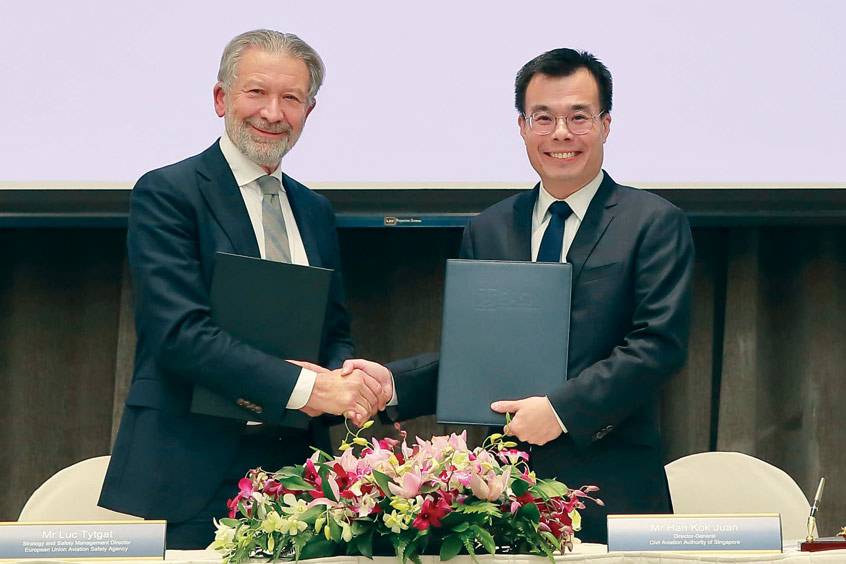Why visit ACE ’24?

The Civil Aviation Authority of Singapore (CAAS) and EASA have signed a memorandum of understanding (MOU) to collaborate on urban air mobility to support the development, deployment and safe operation of vertical take off and landing (VTOL) aircraft. The agreement was signed by CAAS director general Han Kok Juan and EASA strategy and safety management director Luc Tytgat on 18 October, 2022, on the side lines of the inaugural European Union-Asia Symposium on Unmanned Aircraft Systems and Urban Air Mobility.
Under the MOU, the authorities will collaborate on:
- Development of regulatory standards and related requirements for the certification and operation of VTOL aircraft, including the competencies of personnel involved in the operation of such aircraft, the certification requirements for operations in hot and humid environments and the requirements for personnel training organisations.
- Strategies for outreach to relevant stakeholders on urban air mobility including educational outreach to the public and the industry, and analysis on public attitudes towards urban air mobility and VTOL as a mode of transport in an urban environment.
- Joint organisation of conferences, workshops, talks and other activities on urban air mobility.
The inaugural symposium was jointly organised by CAAS and EASA, the first time regulators from Europe and Asia Pacific have come together to discuss unmanned aircraft systems (UAS) and urban air mobility (UAM) regulation, alongside leading industry players and researchers. Over 20 civil aviation authorities from the two regions participated in the four day symposium to engage industry players and researchers, discuss UAS and VTOL development and regulations and undertake a field visit to the Maritime Drone Estate to learn how Singapore facilitates the development of novel technology in a regulatory test-bed environment.
Han Kok Juan says: “In the last few years, we have seen quantum leaps in UAS and UAM development. The potential benefits are tremendous. Realising them will require concomitant development in regulation and regulators need to keep pace with technology and business developments to assure safety and security and build public confidence and acceptance. As the technology is novel, we cannot do this alone but need to work together to share knowledge and pool regulatory resources. The CAAS-EASA MOU is a pathfinder to catalyse such partnerships.”
Tytgat adds “The MOU provides us with a platform from which we can continue to develop our valued partnership and safely integrate electric air taxis into the aviation system. We know that traditionally regulators lag behind industry developments and innovations. Both this MOU and the wider symposium will contribute to regulators getting ahead of the technology curve in support of our future safety oversight responsibilities.”
Another partnership has developed between the FAA and the Japan Civil Aviation Bureau (JCAB), who have signed a declaration of cooperation to support future advanced air mobility (AAM) aircraft development and operation. The declaration continues the safety agencies' long partnership and formalises ongoing discussions on certifying and validating new AAM aircraft, production, continued airworthiness, operations and personnel licensing.
“The FAA and the JCAB have enjoyed a long and strong working relationship, and that will extend into this new era of aviation,” says acting FAA administrator Billy Nolen. “Close collaboration with our international partners is critical to successfully and safely integrating these new technologies.”
The two agencies will exchange ideas, information, skills and techniques and collaborate on AAM projects and challenges of mutual interest.
This follows the FAA's partnering with the UK, Canada, Australia and New Zealand in the National Aviation Authorities Network to harmonise its certification criteria and integration plans.